
Problems of Atomic Science and Technology
Scope & Guideline
Elevating Standards in Atomic Science Research.
Introduction
Aims and Scopes
- Nuclear Materials Science:
Research related to the development, characterization, and improvement of materials used in nuclear reactors, including their mechanical properties under radiation exposure. - Radiation Physics and Chemistry:
Studies focusing on the effects of radiation on various materials, including polymers, metals, and composites, as well as the chemical processes induced by radiation. - Nuclear Reactor Safety and Efficiency:
Investigations aimed at enhancing the safety, efficiency, and sustainability of nuclear power plants, including assessments of structural integrity and failure risks. - Plasma Physics and Applications:
Research into plasma technologies, including applications in nuclear fusion, material processing, and radiation detection. - Environmental and Radioecological Studies:
Studies assessing the impact of nuclear technologies on the environment, including radiation monitoring and waste management. - Innovative Diagnostic Techniques:
Development and application of advanced diagnostic tools for studying materials and processes in nuclear science, including simulation and modeling approaches.
Trending and Emerging
- Advanced Materials for Radiation Applications:
There is a growing emphasis on the development of novel materials, such as high-entropy alloys and advanced composites, specifically designed for enhanced radiation resistance and performance in nuclear environments. - Plasma Technologies and Their Applications:
Research on plasma technologies is gaining traction, with applications in waste treatment, material synthesis, and surface modification, reflecting a broader interest in non-thermal processing methods. - Nuclear Waste Management and Disposal:
Increased attention is being paid to the safe management and disposal of nuclear waste, driven by regulatory changes and public concern about environmental impacts. - Computational Methods in Nuclear Engineering:
The use of computational modeling and simulation techniques is on the rise, enabling more accurate predictions of material behavior and reactor performance under varied conditions. - Radiation Detection and Measurement Technologies:
Emerging technologies for radiation detection, including advanced sensors and monitoring systems, are becoming a focal point, aligning with global nuclear safety initiatives.
Declining or Waning
- Traditional Nuclear Physics:
Research focused on the fundamental aspects of nuclear physics has seen a decrease, as applied research and interdisciplinary approaches gain more attention. - Conventional Radiation Shielding Techniques:
Studies that rely on traditional materials and methods for radiation shielding are becoming less common, as newer and more efficient materials and techniques are being explored. - Low-Energy Nuclear Reactions:
Research on low-energy nuclear reactions has diminished, possibly due to a shift towards high-energy applications and advanced reactor designs. - Classical Thermal Hydraulics:
While still important, classical studies of thermal hydraulics in nuclear reactors are being overshadowed by more integrated approaches that combine thermal, mechanical, and chemical analyses. - Basic Research in Nuclear Medicine:
There appears to be a waning interest in basic nuclear medicine research within this journal, with a shift towards applied research and clinical applications.
Similar Journals

PLASMA SCIENCE & TECHNOLOGY
Pioneering Insights in Condensed Matter PhysicsPLASMA SCIENCE & TECHNOLOGY is a distinguished academic journal published by IOP Publishing Ltd, focusing on the realm of condensed matter physics. With its inception in 2000 and continuing through 2024, the journal serves as a vital platform for disseminating groundbreaking research and developments in plasma science, encompassing experimental and theoretical studies that advance our understanding of plasma behavior and its applications. Although the journal is not open access, its insights are invaluable for researchers, professionals, and students devoted to the intricate physics of plasmas, particularly given its respectable Q2 quartile ranking within its category as of 2023 and a notable Scopus rank that places it within the 44th percentile among its peers. Published from the United Kingdom, the journal aims to foster collaboration and innovation in this essential field of study.
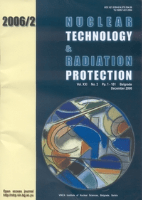
Nuclear Technology & Radiation Protection
Illuminating the path to efficient nuclear technology.Nuclear Technology & Radiation Protection is a distinguished open-access journal published by the VINCA Institute of Nuclear Sciences, Serbia, dedicated to advancing knowledge in the fields of nuclear energy and radiation safety. Since its inception in 2002, the journal has been an essential resource for researchers, professionals, and students, offering a platform for the dissemination of high-quality research that contributes to the safe and efficient use of nuclear technology. With an impressive Q2 ranking in both the Nuclear Energy and Engineering and Safety, Risk, Reliability and Quality categories for 2023, the journal reflects a commitment to excellence and relevance within its scope. It serves as a pivotal forum for sharing innovative findings, addressing current challenges, and contributing to the global discourse on nuclear safety and technology. The journal is indexed in Scopus, enhancing its visibility and impact in the academic community. By facilitating unrestricted access to its articles, Nuclear Technology & Radiation Protection continues to foster collaboration and engagement among scholars in the nuclear science domain.

ATOMIC DATA AND NUCLEAR DATA TABLES
Navigating the complexities of atomic and nuclear phenomena.ATOMIC DATA AND NUCLEAR DATA TABLES, published by Academic Press Inc Elsevier Science, is a leading journal in the fields of atomic and molecular physics, as well as nuclear and high energy physics. With an ISSN of 0092-640X and an E-ISSN of 1090-2090, this esteemed journal has been providing comprehensive data tables and significant research insights since its establishment in 1969. Spanning until 2024, it continues to serve as an invaluable resource for researchers and professionals aiming to deepen their understanding of atomic interactions and nuclear processes. Holding a commendable Q2 ranking in both relevant categories, it is recognized for its impact, reflected in Scopus rankings, where it ranks 25th out of 87 in Nuclear and High Energy Physics, and 87th out of 224 in Atomic and Molecular Physics. While it does not offer open access, the journal remains a crucial repository for high-quality data essential for scientific endeavors and advancements in these complex fields.
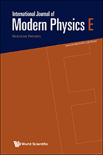
INTERNATIONAL JOURNAL OF MODERN PHYSICS E
Pioneering Discoveries in the Realm of High Energy PhysicsThe INTERNATIONAL JOURNAL OF MODERN PHYSICS E, published by WORLD SCIENTIFIC PUBL CO PTE LTD, serves as a distinctive platform for the dissemination of high-quality research in the fields of Nuclear and High Energy Physics, as well as Physics and Astronomy. With an ISSN of 0218-3013 and covering a timeline from 1996 to 2024, the journal has established itself within the academic community, achieving a respectable Q3 ranking in its respective categories for 2023, underscoring its commitment to advancing knowledge in modern physics. Although it operates without an open access model, the journal's curated content is accessible to a wide audience of researchers, professionals, and students engaged in cutting-edge physics. Set in Singapore, this journal not only contributes to scholarly discussions but also fosters a global collaboration among physicists, making it an invaluable resource for those seeking to deepen their understanding and contribute to ongoing dialogues in the scientific community.

PHYSICS OF PARTICLES AND NUCLEI
Charting New Territories in Particle PhysicsPhysics of Particles and Nuclei is an esteemed journal within the field of nuclear and high energy physics, published by Pleiades Publishing Inc. Based in the United States, this journal has been a vital platform for disseminating cutting-edge research since its inception in 1996, with coverage extending until 2024. Indexed under the ISSN 1063-7796 and the E-ISSN 1531-8559, it has established itself as a noteworthy publication, currently categorized in the Q3 quartile according to the 2023 standards for Nuclear and High Energy Physics. With its Scopus ranking placing it at #62 out of 87 in its category, Physics of Particles and Nuclei provides unique insights and discussions that resonate with academics, researchers, and students alike. Although it does not offer open access, the journal continues to serve as a crucial resource for those looking to engage deeply with the latest advancements and theoretical explorations in particle and nuclear physics.

International Journal of Radiation Research
Connecting Global Scholars in Radiation ResearchThe International Journal of Radiation Research, published by the IJRR-IRANIAN JOURNAL RADIATION RES, serves as a critical platform for researchers and professionals in the fields of radiology, nuclear medicine, and imaging technology. Since its inception in 2003, this peer-reviewed, open-access journal has focused on disseminating significant findings and advancements, contributing to the global discourse on radiation research. With an ISSN of 2322-3243, the journal offers valuable insights into emerging technologies and methodologies, maintaining a commitment to enhancing the understanding and application of radiation in medical science. Although currently positioned in the Q4 category across its scopes, the journal strives to elevate its impact by promoting high-quality research and innovative practices. The journal is accessible to a wide audience and encourages submissions from scholars worldwide, directly supporting the advancement of knowledge in radiological and ultrasound technology. For those seeking to explore and contribute to this dynamic field, the International Journal of Radiation Research represents an invaluable resource.
Plasma and Fusion Research
Leading the Charge in Global Plasma Research and DevelopmentPlasma and Fusion Research is a pivotal journal within the realm of plasma science and nuclear fusion, published by the Japan Society of Plasma Science and Nuclear Fusion Research. With an ISSN of 1880-6821, this journal serves as a vital platform for disseminating significant research findings and advancements from Japan and around the globe. Operating since 2006, it has steadily contributed to the field, reflected in its recognition as a Q3 journal in Condensed Matter Physics for the year 2023 and its ranking of #383 out of 434 in the Scopus categories, placing it in the 11th percentile. Although it currently does not offer open access, the journal's commitment to quality research makes it essential reading for researchers, professionals, and students keen on exploring the complexities of plasma dynamics, fusion technology, and their applications in energy production. Situated in Nagoya, Japan, the journal fosters a collaborative environment aimed at pushing the boundaries of knowledge in plasma physics and enhancing the understanding of fusion processes.
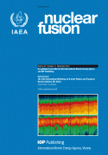
NUCLEAR FUSION
Advancing the frontiers of fusion energy research.NUCLEAR FUSION is a prestigious academic journal published by IOP Publishing Ltd, dedicated to advancing the field of nuclear and high-energy physics. With a significant impact factor and recognized among the top-tier journals, it boasts a Q1 ranking in both Condensed Matter Physics and Nuclear and High Energy Physics as of 2023. This journal, which has been published continuously since 1969, serves as a vital platform for researchers, professionals, and students exploring the latest advancements in fusion energy, plasma physics, and the intricate phenomena associated with high-energy states of matter. By disseminating original research, comprehensive reviews, and interdisciplinary studies, NUCLEAR FUSION strives to foster innovation and collaboration in pursuit of sustainable energy solutions, contributing significantly to the scientific community’s understanding of nuclear fusion processes. While the publication offers access options that enhance its reach, its rigorous peer-review process ensures the highest quality of scholarly communication.
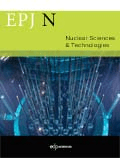
EPJ Nuclear Sciences & Technologies
Connecting Researchers and Ideas in Nuclear SciencesEPJ Nuclear Sciences & Technologies is a prominent Open Access journal published by EDP Sciences S A, focusing on the vital fields of Nuclear and High Energy Physics, Nuclear Energy and Engineering, and Energy Engineering and Power Technology. Launched in 2015, this journal provides a platform for researchers, students, and professionals to disseminate cutting-edge research and innovations that address the challenges and opportunities in nuclear sciences, a field of critical importance in today’s energy landscape. With an ISSN of 2491-9292 and an evolving impact reflected in its 2023 Q3 quartile rankings across several relevant categories, EPJ Nuclear Sciences & Technologies is committed to promoting high-quality, peer-reviewed research accessible to a global audience. Its dedicated focus on enhancing knowledge transfer and international collaboration makes it an essential resource for anyone engaged in nuclear sciences and technologies.
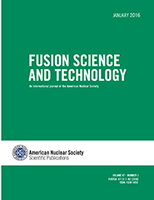
FUSION SCIENCE AND TECHNOLOGY
Leading the charge in multidisciplinary fusion research.FUSION SCIENCE AND TECHNOLOGY is a leading peer-reviewed journal published by Taylor & Francis Inc., dedicated to the advancement of knowledge in the fields of nuclear science, engineering, and fusion technology. With an impact factor that reflects its growing significance, this journal provides a platform for innovative research that addresses the challenges and opportunities within Civil and Structural Engineering, Materials Science, Mechanical Engineering, and Nuclear Energy and Engineering. Its open access option facilitates wider dissemination of groundbreaking research, enhancing visibility and accessibility for researchers, professionals, and students alike. As a member of the Q2 and Q3 Quartiles across various categories—demonstrating its reputable standing among peers—the journal plays a crucial role in fostering collaboration and sharing the latest scientific discoveries in fusion and related technologies from 2001 until 2024. This makes it an essential resource for anyone engaged in the multidisciplinary aspects of fusion science, contributing to the development of sustainable energy solutions.